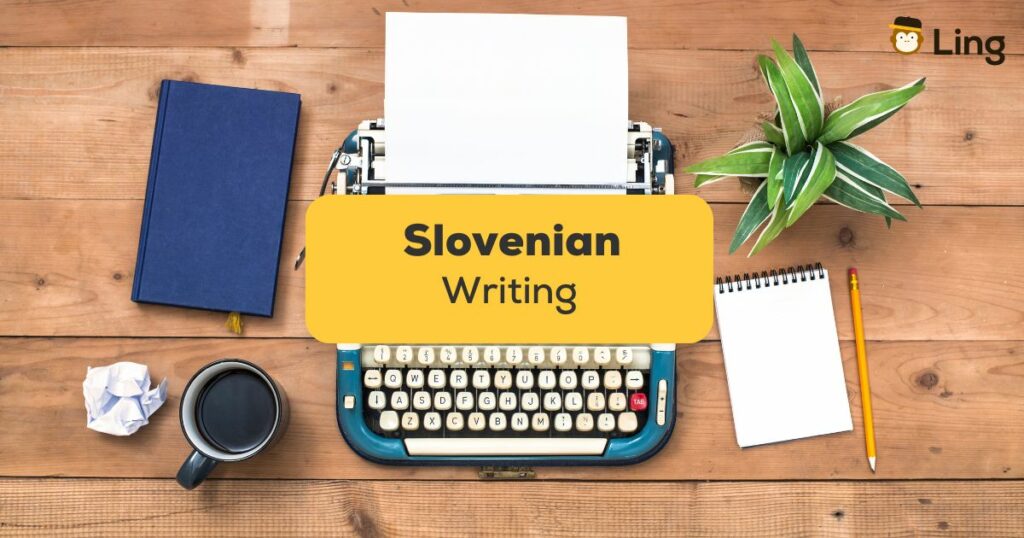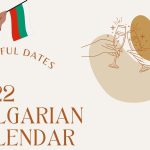Every language has a set of rules when it comes to writing, and they are there for good reason. Writing rules help make messages clear, consistent, and easier to understand. Do you know what are the rules for the Slovenian writing? Well, the foremost is to remember that Slovenian is a phonetic language so words are pronounced just as they are spelled.
Now, in this grammar lesson, we’ll go through all the important information when it comes to Slovenian writing, so you can avoid mistakes and learn some useful vocabulary as well.
Table Of Contents
Essential Rules Of Slovenian Writing
Slovenian writing is pretty straightforward but follows certain rules that are essential for correct grammar and style. Let’s go through some of the most important writing rules for language learners.
1. Slovenian Alphabet
There are 25 letters in the Slovenian alphabet. There are no letters like q, w, x, or y, but it does include three special letters: č, š, and ž. Notice how these three have little decorations on top of them? In Slovenian, we call this strešica, or ”little roof.” In English, this is called a diacritical mark, and it essentially changes how these letters sound.
An important thing to remember is that Slovenian is a phonetic language, so words are pronounced just as they are spelled, and each letter usually has one sound.
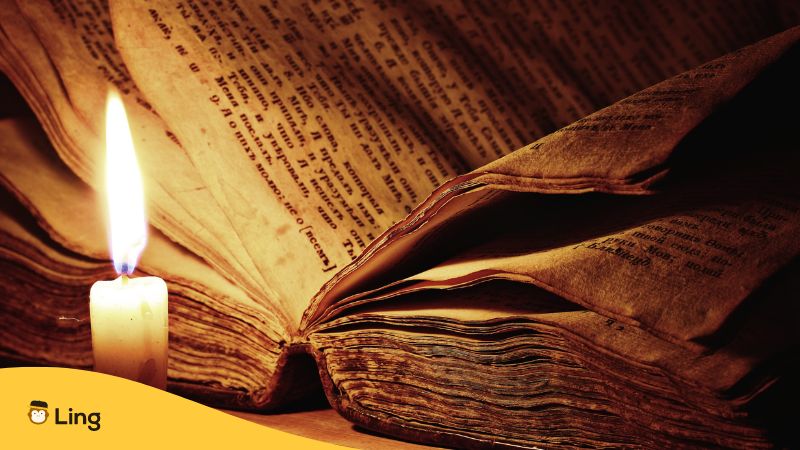
2. Numbers In Slovenian
When writing numbers in Slovenian, the rule is simple. Numbers 1 through 9 are usually going to be spelled out like this:
- 1 – ena
- 2 – dva (or dve for feminine nouns)
- 3 – tri
- 4 – štiri
- 5 – pet
- 6 – šest
- 7 – sedem
- 8 – osem
- 9 – devet
Higher numbers are written in numerical form using digits. This rule is not always in place. For example, you can use digits for small numbers in technical texts. If there are numbers involved and the space is limited, it’s more logical to write numbers as numerals as well.
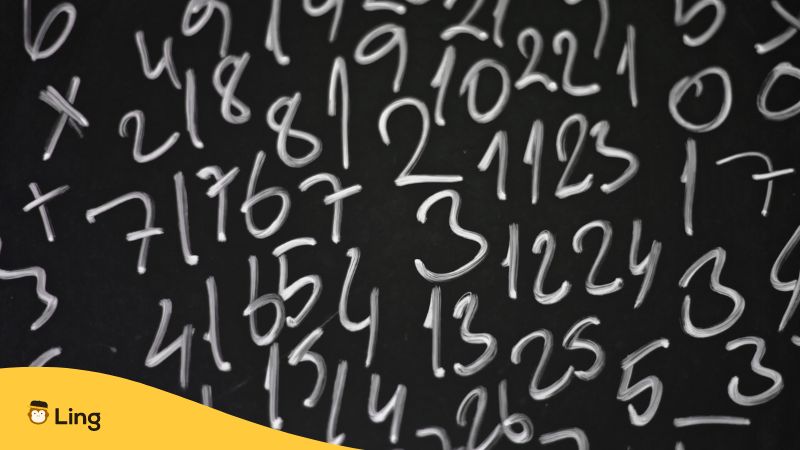
3. Capitalization In Slovenian
In Slovenian, you always use a capital letter at the start of each sentence. You also use capital letters for proper names. These include people’s names, made-up names, resident names, and animal names (as pets, not as species).
Cities and countries also get capitalized. If a geographical name in Slovenian is made up of two words, both are capitalized, but there are some exceptions.
Same goes for names of organizations, companies, titles of books, and shows.
4. Slovenian Dashes
The Slovenian language writes two types of dashes: the hyphen (-) and the dash (–).
Here’s how you would use a hyphen in compound words. As you can see, there are no spaces between them.
- Slovenian-Austrian border: slovensko-avstrijska meja
Dashes are used to draw attention or clarify something in a sentence. You can also use them to separate an extra bit of information from the main part of the sentence. Other than this, dashes can show ranges or negative numbers in math or temperatures. So, they’re handy for making writing clearer and more organized! They can have a space or not. Here are some examples of how to use this in Slovenian writing:
- 6 – 2 = 4
- Na straneh 25–52 (On pages from 25 to 52)
- –2 ºC
- Hitro je stekel domov – dež je začel močno padati in ni želel, da bi se zmočil. (He ran home – the rain was pouring down, and he didn’t want to get wet.)
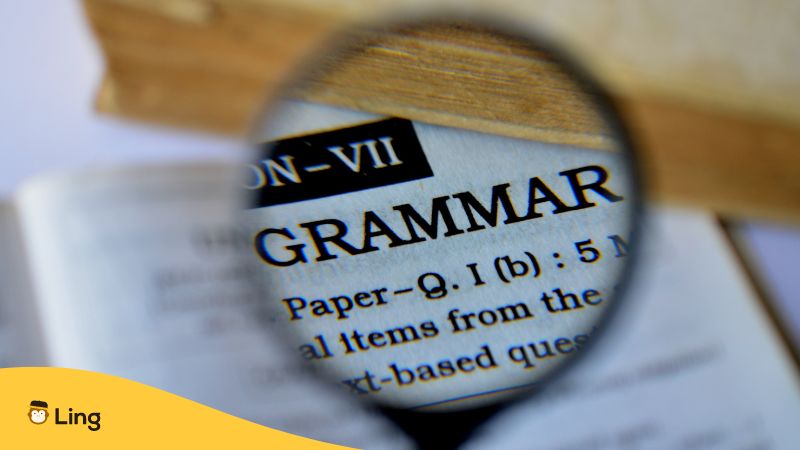
5. Date And Time In Slovenian
Slovenian weekdays and months are not capitalized in writing! To write the date and time in Slovenian, you would follow a pattern of day, month and then year. You can write the month with the name as well. For example, ‘Thursday, June 20, 2024,’ would be:
- Četrtek, 20. junij, 2024
- Četrtek, 20. 6. 2024
6. Measures In Slovenian
When writing numbers with units of measurement like kilograms (kg) or degrees Celsius (°C), we always need to put a space between the number and the unit, like so:
- 5 kg
- 30 °C
7. How To Write Slovenian E-mails
When you’re writing an email in Slovenian, you need to be clear and formal. You would start with a greeting spoštovani, or pozdravljeni. It’s like saying ”dear Mr.” in English, but in Slovenian you don’t add the last name.
If you’re writing an email to a coworker, or a friend let’s say, you can also use an informal address, such as zdravo, or živjo (Hello). Start with a polite line, then get to your point. Keep the message clear and organized.
Close formally with s spoštovanjem (with respect), or with lep pozdrav (best regards), which is a bit less formal, but still appropriate. Alternatively you can also say lepo vas pozdravljam. Of course, add your name at the end.

How Do You Say Writing In Slovenian?
In Slovenian, “writing” is pisanje, coming from the verb pisati, which means “to write.”
However, in this sense, the word I would use is pravopis, which is basically a set of rules for how to write things correctly in Slovenian. There’s a guidebook called pravopis, where you’ll find out where to put punctuation marks, commas and periods, when to capitalize letters and how to write clearly and consistently.
Useful Slovenian Vocabulary
Now that you’ve learned some useful tips about Slovenian writing, you can also learn related Slovenian vocabulary. This will make learning to write in standard Slovene even easier for you.
| English | Slovenian |
|---|---|
| Grammar | Slovnica |
| Punctuation | Ločila |
| Uppercase letter | Velika začetnica |
| Lowercase letter | Mala začetnica |
| Sentence | Poved |
| Paragraph | Odstavek |
| Word | Beseda |
| Date | Datum |
| Spelling | Črkovanje |
| Dictionary | Slovar |
| Language | Jezik |
If you’ve been searching for a structured approach to learning Slovenian vocabulary and grammar, you should think about a language learning app, like the Ling app, for example. Ling offers practice exercises, and interactive activities that make learning Slovenian fun and engaging. It’s designed for all learners, from beginners to advanced, and covers many topics and skills.
FAQs Related To Slovenian Writing
What Is The Word Order In Slovenian?
In Slovenian, the sentence structure is usually a subject-verb-object (SVO) order. For example: Mačka je ujela miš (The cat caught the mouse).
But, word order can change to highlight different parts of the sentence. For example, instead of saying Mark je kupil knjigo (Mark bought a book), you can say Knjigo je kupil Mark (The book was bought by Mark), and with this you emphasize that it was indeed Mark who bought it and not someone else.
How To Use Punctuation Marks In Slovenian?
- Commas in Slovenian are used for separating items in lists, as a decimal separator, and after greetings. It’s important to note that there’s no space before a comma but a space after it.
- Semicolons are like slightly stronger breaks than commas. They’re used to separate bits of a sentence that could stand alone but are related. Also, they’re used to connect ideas or list things that are similar. Just like commas, no space before, but a space after.
- Colons in Slovenian are like introducers. They’re used to lead into an explanation. Usually, what comes after a colon starts with a lowercase letter. If it’s introducing a title or something important, you might use an uppercase letter. And again, no space before, but a space after.
What Language Is Slovenian Most Similar To?
In terms of writing, Slovenian has similar rules to other Slavic languages, such as Croatian. The languages are closely related in terms of pronunciation, and you’ll also find many similar words in both languages.
Slovenian writing, like many other European languages, uses the Latin alphabet, so it’s visually similar to others. Slovenian grammar, with cases and verb conjugations, resembles languages like Russian and Polish. The Slovenian language also uses foreign words from other languages. This is because of historical, cultural, and economic interactions with other countries, which have introduced terms from languages such as German, Italian, English, and French into everyday Slovenian vocabulary.

Scribbling With Style In Slovenian!
In Slovenian writing, understanding basic rules like pronunciation, punctuation, and word order is key to clear communication. If you follow these rules and expand your vocab, you’ll write Slovenian clearly and confidently.
So, keep practicing and enjoy expressing yourself in this beautiful language!
